Pai, one of the loveliest districts in the Mae Hong Son, attracts tourists to visit every year, and has plenty of Thing to Do sites. Its charm and beauty lure vacationers to return throughout the year, every year.
Huai Nam Dung
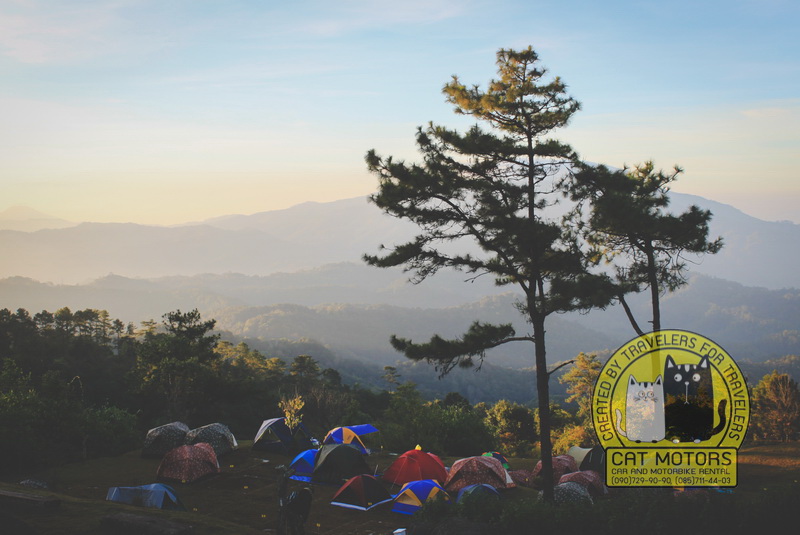
One of the foggiest places in the Moo 7 Wiang Nua sub-district borders the Mae Tang district of the Chiang Mai. In any season, tourists will enjoy their visit, but especially in the cold season when the landscape offers blooming, welcoming winter flowers. By using the rest-house service, tourists can awake the next morning to experience the mystical fog. For interested tourists, please request more information and details at the Huey Num Dung National Park office Tel. 053-248491. Periodically, the rest-house is fully booked; therefore, tourists can stay overnight in Pai and make the trip the next morning. It lies about forty km from the city.
Huai Jog Luang
About 43 km from the Pai city, Huai Jog Luang, one of the Pai district’s natural areas, will delight the most avid naturalist. Situated on a high hill in the Mae Hee sub-district in the Mae Ya area, Huai Jog Luang boasts grand mountain ranges and showcases various winter flowers that blossoms every year; the most advantageous time to visit is in the cold season.
Mae Yen Waterfall
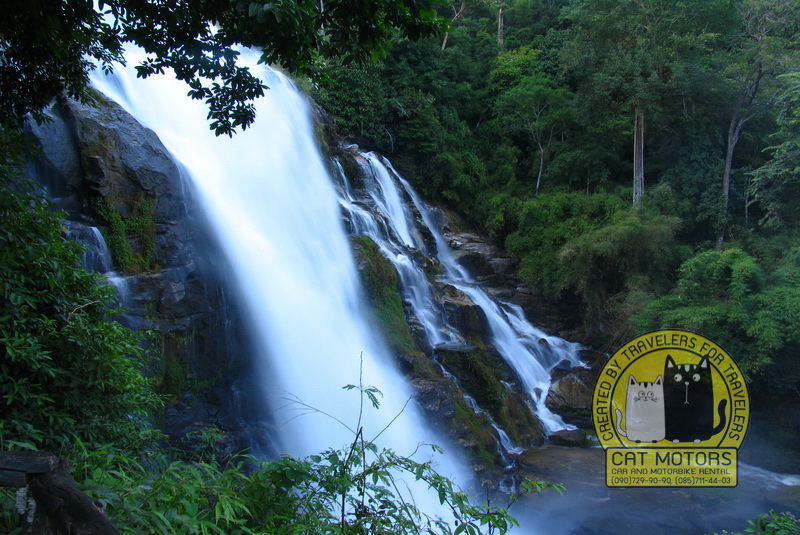
Tourists love exploring the natural surroundings before arriving at this breathtaking waterfall; then, upon finding it hidden about 7 km from the city, everyone is overwhelmed by one of the most awe-inspiring waterfalls in the Pai district. The waterfall cascades in three stages, each with its own beauty. This adventure is easily enjoyed for three to five hours.
Mor Pang Waterfall
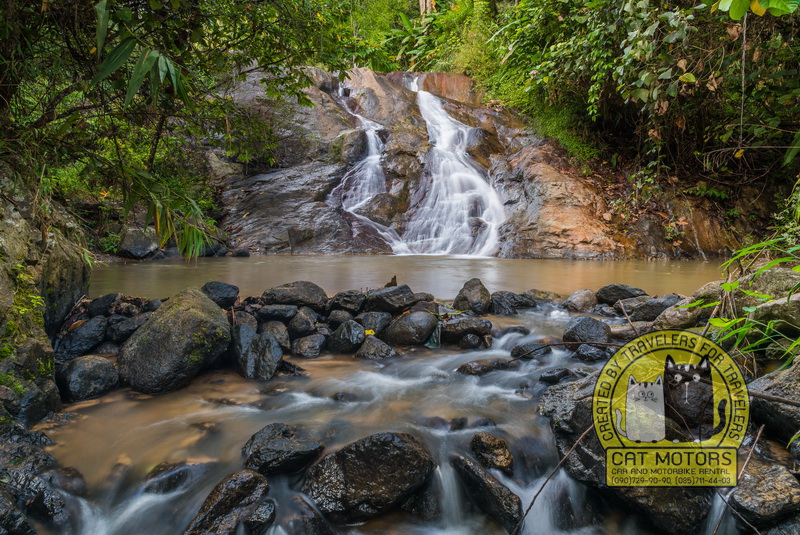
This three-stage, captivating waterfall, located approximately 8 km away from the district, excels other waterfalls. Pieces of stones lie under flowing water. The surrounding environment of large and small trees creates a calm, peaceful place for relaxing. In addition, Lahu hill tribe villages are nearby to visit and experience their culture and lifestyle.
Tha Pai Hot Spring (Pong Nam Ron Tha Pai)
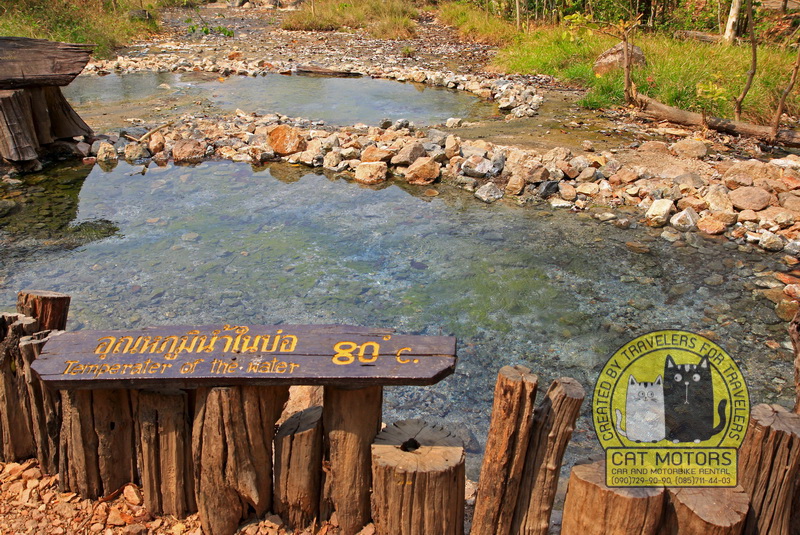
At 87-88 km down highway 1095, one finds Pai-Mae Malai in the Huai Hee sub-district, another “Things to do in Pai” place. With a farther drive of 2 km and a 300 m walk beside the hot stream, tourists will discover the wonder of the Tha Pai hot spring. This 80 degree ̊C natural hot spring bubbles up to the surface shrouding the area in steam. Pools dot the area waiting for tourists to soak and relax while the shade of large and small trees make the area cool and peaceful. Tourists may pitch tents for an overnight stay to enjoy the natural surroundings. This treasure is worth experiencing.
Muang Pang Hot Spring
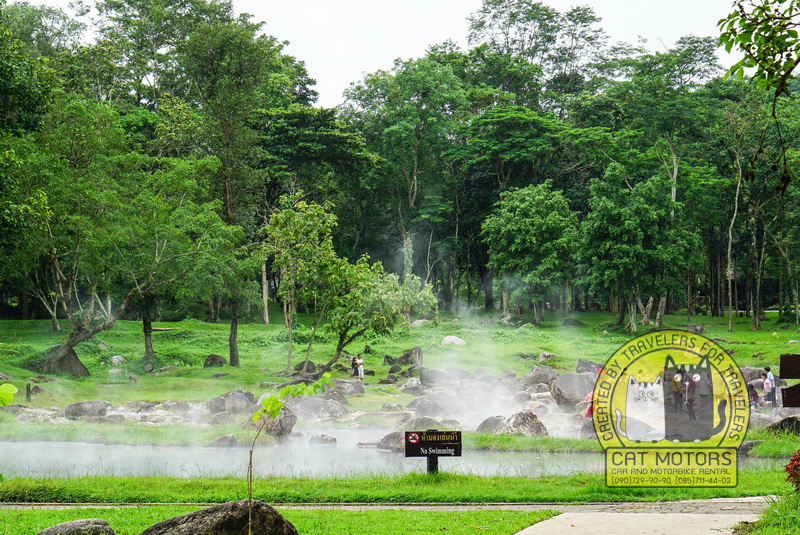
Another one of the most amazing hot springs in the Pai district is located in the Baan Muang Pang area 28 km away from the Pai district. This large hot spring of 95-degree ˚C flows from above through large and small rocks offering a spectacular where tourists can fully relax and enjoy.
Kong Lan
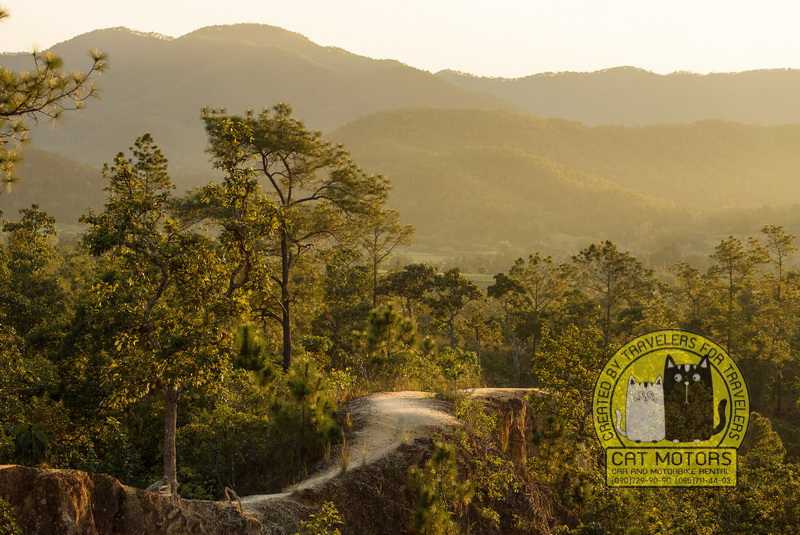
Another “things to do in Pai” point is magical valleys carved by Mother Nature are popular places among tourists who like to explore new, interesting places. Here, the earth eroded forming a deep, wide hole about 5 rai (Thai measure). Tourists can visit year-round by traveling Highway 1095 Mae Malai – Pai, which is a 7 km drive from the district followed by a 200 m walk.
Historical Bridge
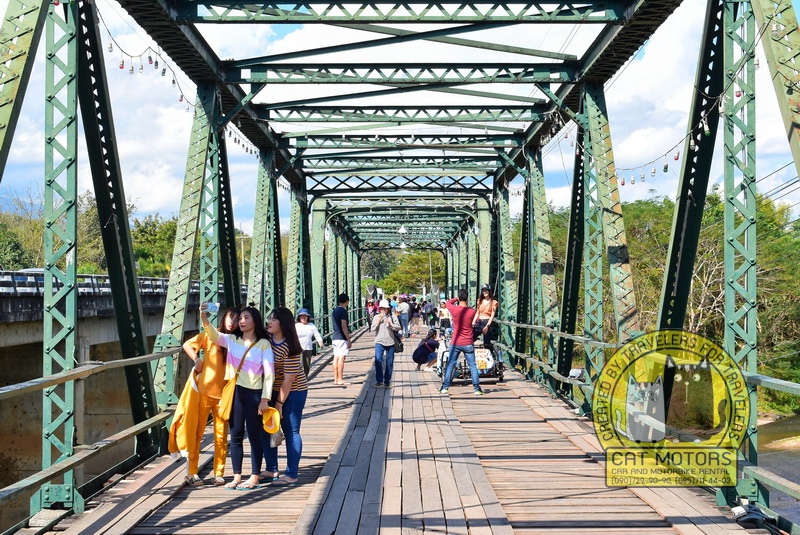
The Kwae River Bridge was built during World War II while Japan still had a great deal of presence in Thailand. During the war, Thailand was Japan’s route for transporting troops and arms into Myanmar. After the war, this bridge continued to be used; after some time, however, the original bridge was replaced. Today, the bridge is in ruins, therefore, unusable, but serves as a historical backdrop for photographs.
Pai Walking Street
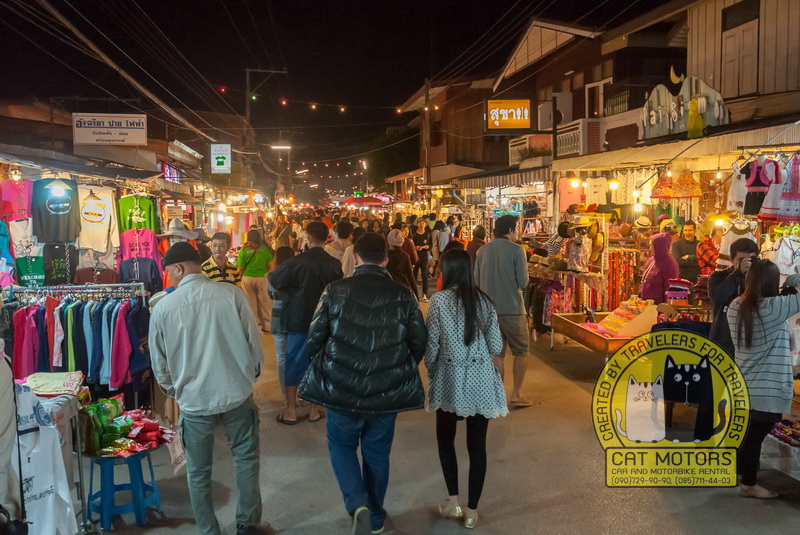
Every night in the Pai district, the street is blocked allowing vendors to set up stalls to sell their wares, which includes ornaments, authentic handiwork, and unique clothing. In addition, tourists can sample Thai street food and fresh fruits and vegetables. On most nights, the street is lit with surrounding lights; occasionally, however, shops and stalls on both sides are illuminated with candlelight glowing along the road creating a soft, comfortable atmosphere where tourists can relax, enjoy, indulge. The ambiance of Pai Walking Street is famous.
Nam Hoo Temple
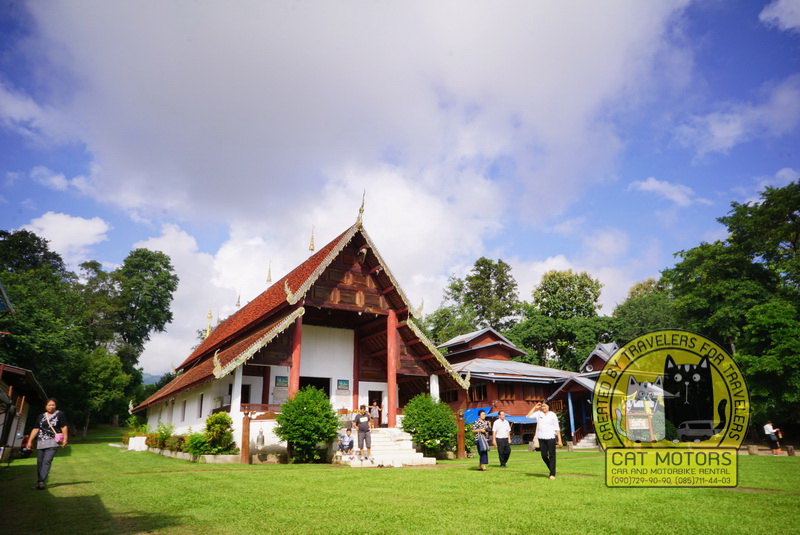
The Nam Hoo Temple, located in the Wiang Tai sub-district 3 km from the Pai district, is the place to visit the Pra Aun Muang (Aun Muang Buddha). Made of bronze measuring 28 inches wide and 30 inches tall, the Buddha has a unique head that can be opened and closed. There is no definitive documentation of the date, but it is believed the temple was built during the reign of Phra Naresuan the Great as a gift to his sister Phra Supan Kalaya. A small pond in front of the pagoda provides a charming backdrop for pictures, and the temple is open daily for tourists to worship.
Phra That Mae Yen Temple
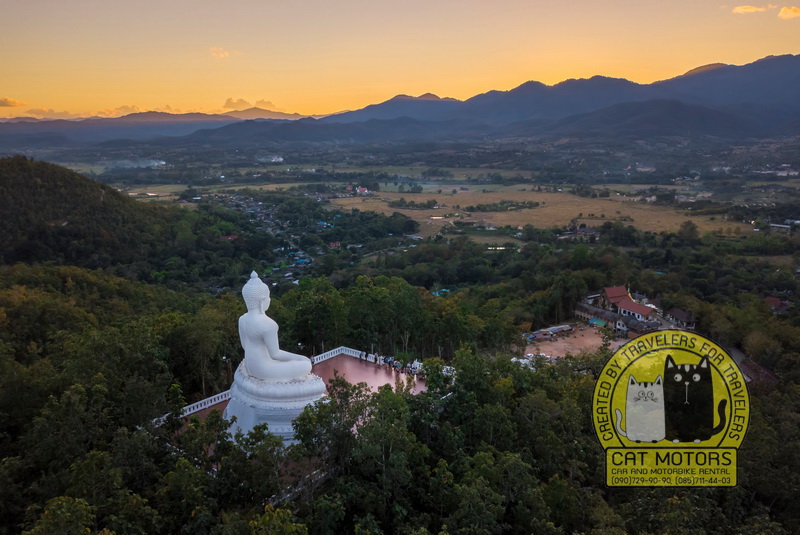
Situated on a high hill in the Mae Yen village in the Huai Hee sub-district, the Phra That Mae Yen Temple gives tourists a spectacular view of Pai. At sunset, the lingering sunlight streaks over the horizon of intricate mountain ranges painting an artist’s canvas.
Santichon Village
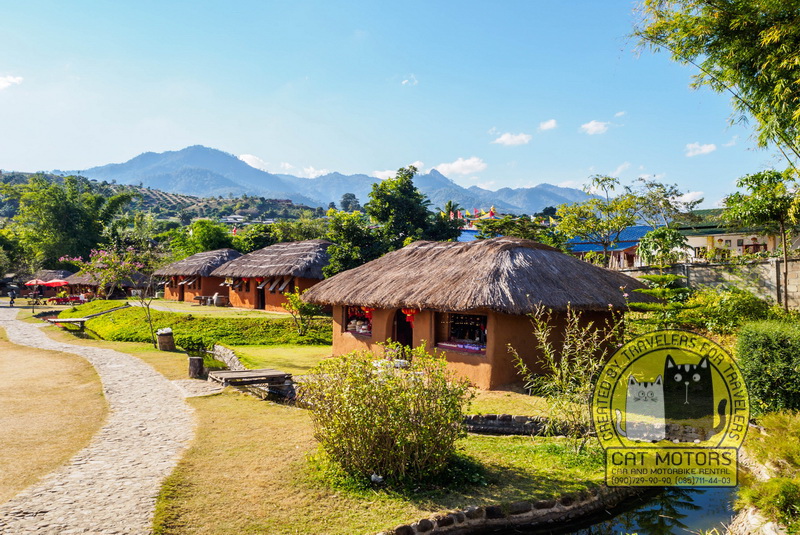
Situated about 4.5 km away, Yunnan’s village was established by immigrants who fled China long ago. Inside the village, tourists can visit the Chinese-Yunnan Centre, peruse souvenir shops, experience the conservative culture, such as the language and attire, and savor the Yunnan foods.
Wat Luang Temple
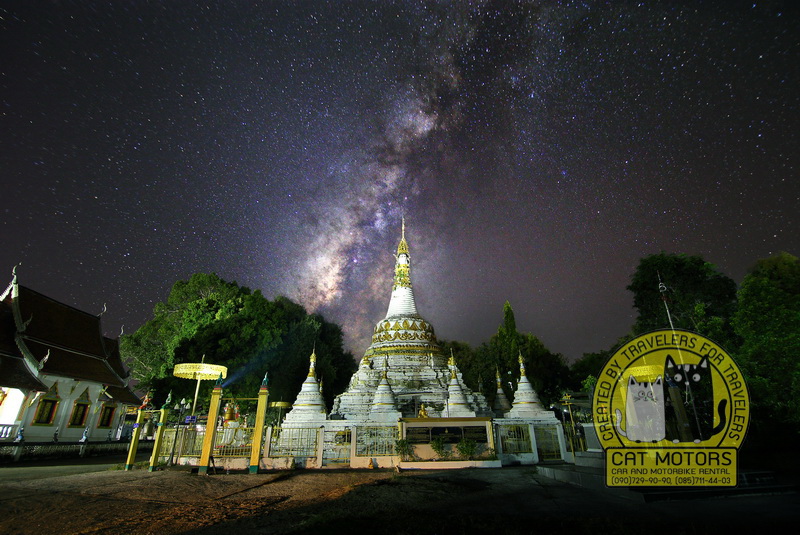
The respected Wat Luang Temple was built more than 200 years ago in approximately 2346. A large pagoda in Shan’s style resides inside the temple; above the pagoda, there is a very stunning square structure with a spire, and in the pagoda, tourists can worship and pay respects to the seven-day monks. The temple is very convenient for tourists since it is located in the Pai municipal area.
Mae Ping Karen Royal Folks Art and Craft Centre
Thirteen km away from Pai through Chiang Mai lies the Karen Mae Ping village. Although today the villagers try to emulate urban lifestyle, tourists will notice a culture definitely different from the town. The architectural style shifts from bamboo houses with typical northern banana leaf roofs to brick houses with a zinc roof. Only the language, attire, and woven cloth with unique designs remain. The village still offers home stay lodging for tourists who want to stay to experience the original lifestyle of the Mae Ping Karen.